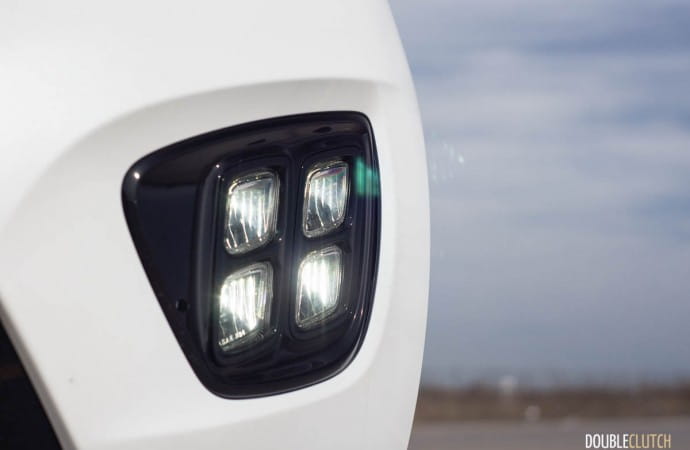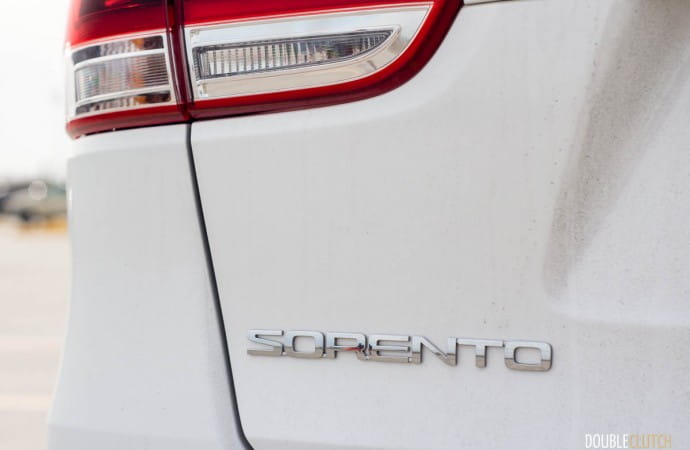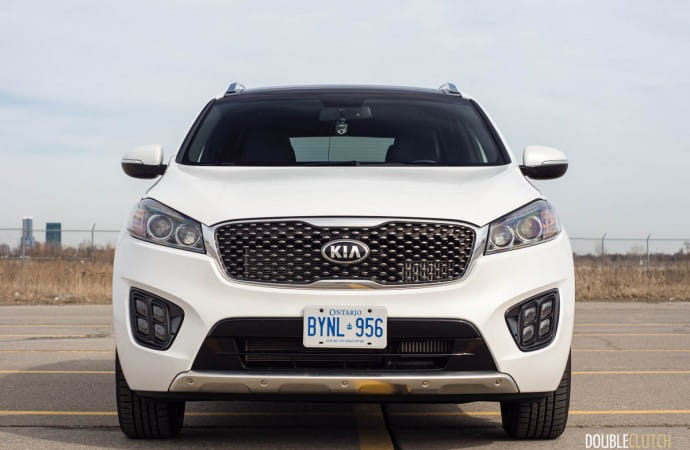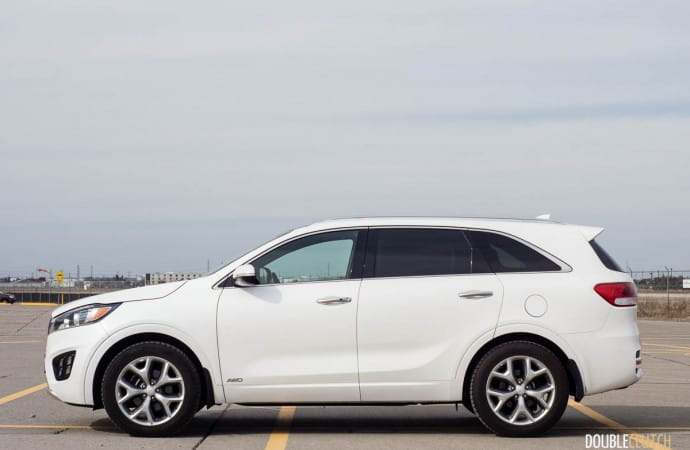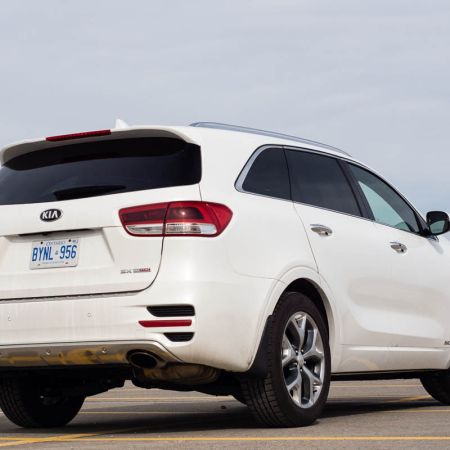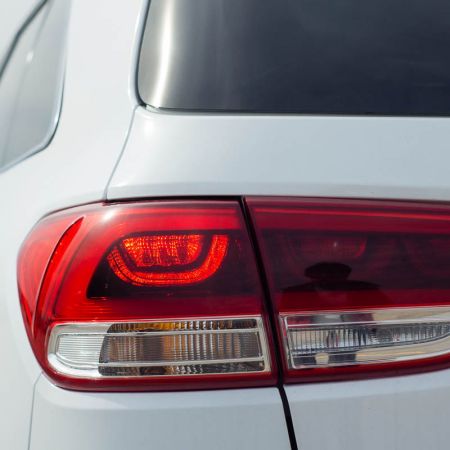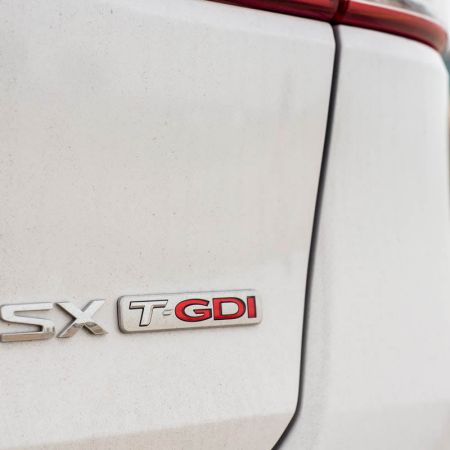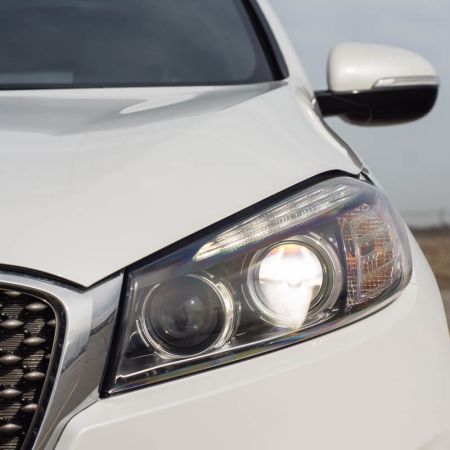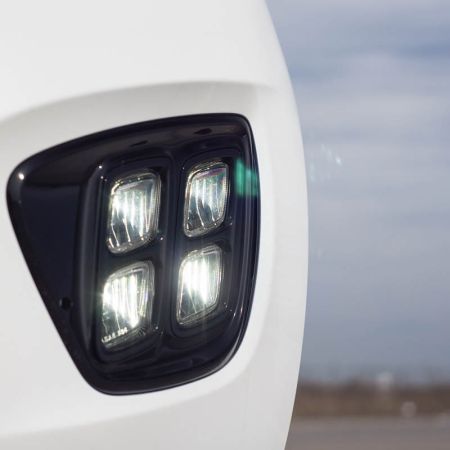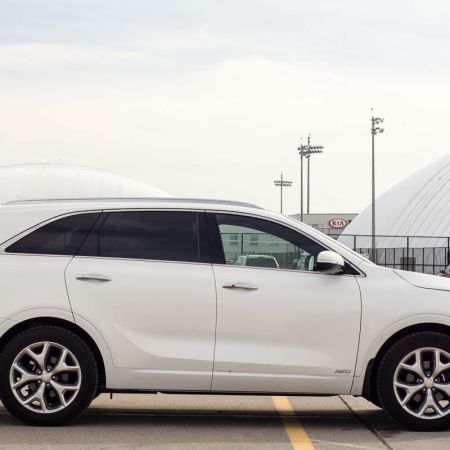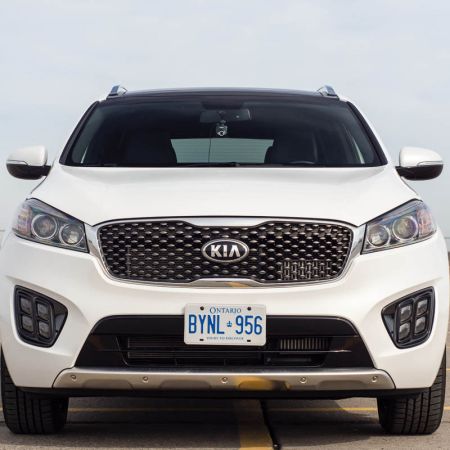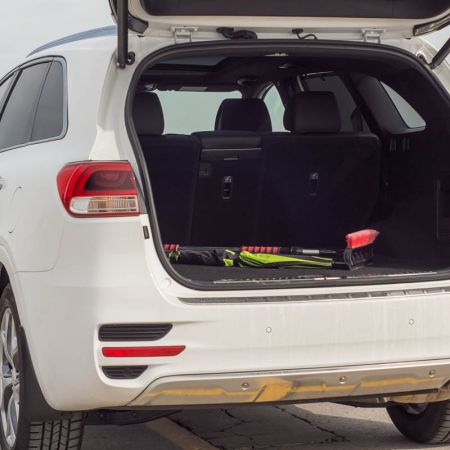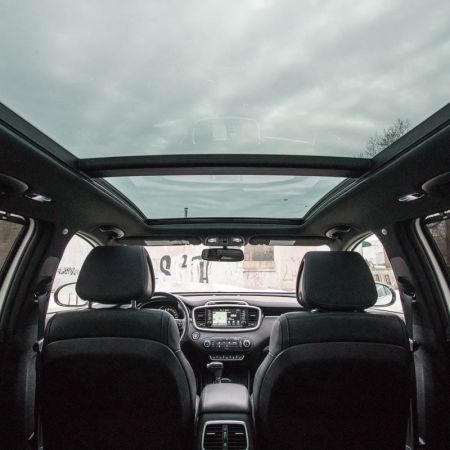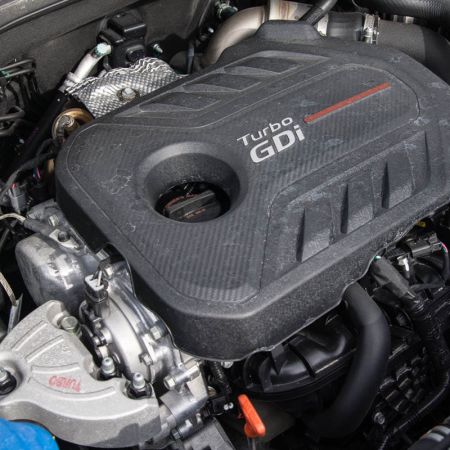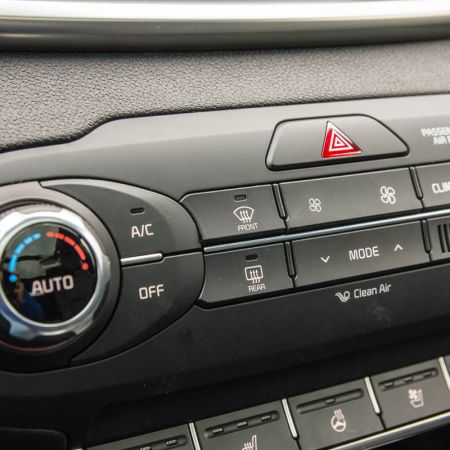With minivans falling out of favour, just about everybody has gotten into the crossover market, and you can typically choose from three sizes without even leaving the same dealer. The sprawling suburbs, wide boulevards, and long driveways have allowed for large vehicles to thrive, so it makes sense to see families spring for more than they need, so they can grow into it. Put yourself into these shoes: you’re newly married, getting a little older, and a baby is on the way. The rough little sporty car you’ve been enjoying in your twenties is now too small for baby duty.
Kia has been putting a ton of resources into their entire lineup – the new Sportage (reviewed here) is really impressive, and the new Optima (reviewed here) is one of the best-looking choices in its class. The Sorento originally started out in as a full-frame SUV with some legitimate off-road hardware, and it evolved into a softer and friendlier package to reflect the changing trends of what people actually use their vehicles for. The all-new 3rd-generation Sorento was introduced for the 2016 model year, and brings along a lot of new technologies and engineering in hopes of stealing market share away from the more established marques. I was sent a Snow White Pearl 2016 Kia Sorento SX Turbo with AWD for evaluation.
Not to repeat a popular opinion, Kia has come a long way since the 80s, and even the 90s. Peter Schreyer, Chief Design Officer for the Hyundai-Kia group, has allowed the group of conglomerates to use modern and dynamic styling to attract new eyeballs to the brand, and increase its influence in the global market. The Sorento carries on the same basic two-box profile from the previous generation model, but the majority of the new design cues are seen at the front and rear-ends of the vehicle. New headlights (they remind me a little like the ones on Jaguars) and a choice between two front grille colours does a good job dressing up the front-end. HID low-beam headlights are available, and top-end SX trims get unique LED fog lights. The rear end maintains its boxy profile, as to maximize cargo and passenger carrying capacity.
At the end of the day, the Sorento is a utilitarian design, aimed at being useful rather than an art exercise. Out of the batch of unibody three-row crossovers currently on the market, the Sorento certainly has style on its side. I do concede, however, that there aren’t very many ways to really style what is essentially a jacked-up minivan. Inside, the Sorento continues the clean theme, with a large centre stack that integrates Kia’s excellent 8” UVO system, which gives you satellite navigation, SiriusXM, and an overall extremely polished interface.
The rest of the interior is equally logical, with a row of buttons below the dual-zone climate control that operate the heated and ventilated seats, as well as the heated steering wheel. I think I like the Toyota Highlander (reviewed here) interior a little better, because of the sheer amount of storage cubbies and pockets everywhere. When kids are in the picture, you’ll quickly discover the need for as much space for toys and goodies as you can get.
My SX tester came equipped with black leather, which is perforated to allow for seat ventilation. Black cloth seats are standard equipment on lower-end trims, and grey leather is available on the midrange EX trim. Off-white two-toned Nappa leather is available on the top-end SX trim, and while it looks great, I’m not so sure it’ll be as family friendly with all the baby-produced stains that are all but inevitable. The recurring theme here is that most of the interiors are black, or a variation of black. Combined with the mostly black dashboard, the interior can be considered a little dark. Thankfully, the huge panoramic sunroof on the SX trim lets in a lot of light into the interior.
Generally, when these larger crossovers are purchased for family duty, they are usually picked up with future considerations in mind. As the family grows, the additional children and all their associated gear has to go somewhere. Considering the Sorento’s full-size proportions, it’s a little surprising to discover that the third-row seating is available only with the optional V6 engine. Anything that doesn’t have the V6 doesn’t get seven-passenger capability.
The Hyundai Santa Fe XL rides on a shared architecture, but there are numerous differences between it and the Sorento, and it’s not simply down to aesthetics. The Sorento differs in that Kia offers you three very different choices for gasoline engines. The entry-level LX gives you the choice between a naturally-aspirated 2.4L four-cylinder engine, or an optional 2.0L turbocharged four-cylinder. The midrange EX and top-end SX start you off with the turbo-four, or an optional 3.3L V6. The 2.0L turbo in my SX tester pumps out 240hp at 6000RPM, and 260 lb-ft. of torque from 1450-3500RPM. The V6 sits at the top of the range, putting out 290hp and 252lb-ft of torque.
It’s worth noting that the turbo-four can deliver more torque, and at a lower rpm. The majority of the turbo boost is programmed to come on strong early on, trailing off after 3500RPM. Considering that the vast majority of drivers rarely venture well beyond this engine speed, the torque is available, as well as useful. Turbo lag is fairly minimal, and the six-speed automatic transmission is well-behaved and lets the boost do a lot of the heavy lifting. For better response, the Drive Mode select button on the centre console can be switched to a Sport mode, allowing the transmission to hold on to gears a little longer, and the throttle a little more sensitive. On the other hand, you can press Drive Mode select again to enable the Eco mode, which makes the throttle less sensitive, and re-programs the transmission to select higher gears as soon as possible.
All-wheel drive is available with all three engines, and is standard on the EX and SX. Sourced from Magna International, Kia is especially proud of its Dynamax all-wheel drive system. Though it’s not an always-on system (like Subaru’s), Kia’s solution is smart enough to utilize various sensors, and send more power to different wheels in a predictive fashion, rather than after the fact. In addition, a fairly unique feature is that you can lock the power distribution to a fixed 50/50 ratio from front to rear. This is especially useful to get out of low-traction situations, such as being stuck in deep snow drifts, for example.
The push behind engine downsizing and forced induction came about because of one reason: fuel efficiency. Smaller, turbocharged engines, under the right conditions and with the right driving habits, can indeed return better figures than a comparable larger, naturally-aspirated engine. To that end, Kia rates the 2.0L turbo at 12.3L/100km in the city, and 9.3L/100km on the highway. During my week of mixed driving with the Sorento SX Turbo AWD, I managed to hit an indicated 10.8L/100km, which is right in the middle of the two figures. For comparison’s sake, the V6 is rated at 13.4L/100km in the city. The Sorento will accept 71L of regular 87-octane fuel, no matter which engine you choose.
Kia, as much as they lean on many different trim and “sub”-trim levels, keeps the actual à la carte options to a minimum. If you’re looking for certain features, you need to step up to the appropriate trim level. The base model Sorento LX 2WD starts at $27,695 with the 2.4L engine. You still get air conditioning, heated seats, and automatic headlights. Within the LX trim, you can opt for all three engines, including the V6, though only with all-wheel drive. The midrange EX adds larger 18-inch wheels, leather seating, heated steering wheel, and additional safety features, such as blind-spot detection and rear-cross traffic alert. The SX trim adds more premium features, such as satellite navigation, ventilated seats, HID headlights (with those cool LED fog lights), and adaptive cruise control. My SX Turbo AWD tester rings in at $42,295. A fully-loaded SX+ V6 AWD, for example, stickers for $46,895.
The full-size unibody crossover segment that the Sorento plays in is an incredibly tough one. The big players, the Toyota Highlander and Honda Pilot (reviewed here), are both extremely popular sellers offering high value. Compared to those two, the Sorento is better-looking (this is subjective), but I think the biggest difference is that it doesn’t come standard with 3rd-row seating. The Highlander and Pilot can seat eight, right out of the box, even in base models. While you can get 7-seat capability in the Sorento, not making it available at all with the 2.0L turbo is a strange omission. Even the Hyundai Santa Fe XL does things differently, making the V6 the only engine option, and offering 3rd-row seating as standard equipment – for about the same price.
At the end of my week with the Sorento, I came away impressed with a few items. First, the robust 2.0L turbo powertrain really does punch above its weight, providing useful torque for typical urban and suburban use. The driving experience is one of good refinement and a quality feel. Next, perhaps it is a need to differentiate itself (as well as me sounding like a broken record) from the Hyundai Santa Fe XL, but not making the 2.0L turbo available with 3rd-row seating really limits its possible customer base. Cargo space behind the second row is excellent, but I’d honestly rather have the option of additional seats, even if they’re just for emergency use – or to put in-laws back there.
Does the Kia Sorento have what it takes to compete with the heavyweights? It certainly does have the fundamentals down, but the equipment choices let it down somewhat. The turbo-four is relatively unique in this class, and I think its efficiency advantage over the V6 gives families a good real-world benefit. Considering that the seating capacity is basically dictated by the engine you choose, it may be safe to assume that V6-equipped models will make up a good chunk of overall sales. The most interesting item to me has to be the sheer differentiation between the Sorento and Hyundai’s Santa Fe XL. It shows the autonomy both companies have from each other, and their own unique takes on the 3-row family crossover.

